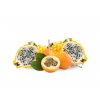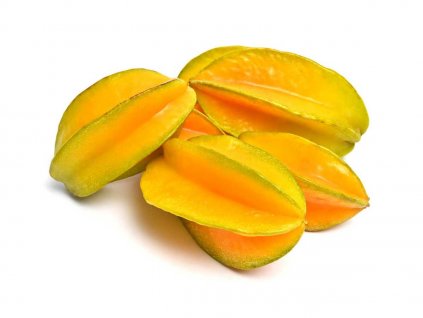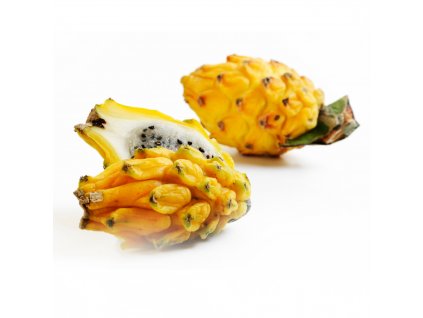History:
Carambola, also known as Chinese star, is a tropical fruit tree native to Southeast Asia. It is grown in all tropical regions of the world, including the Caribbean and Latin America. Carambola has a rich history in traditional Asian medicine and cuisine, where it is used for its exceptional taste and healing properties.
Cultivation:
Carambola thrives in a warm and humid climate, typical of tropical regions. It needs plenty of sunlight and well-drained soil. Thanks to its resistance to drought and demanding care, it is a popular choice for growers in tropical and subtropical areas.
Usage:
Carambola has a refreshing, sweet and sour taste and is often eaten raw as a separate fruit or added to salads, drinks and desserts.
Carambola is also used to make jams, sauces, drinks and sweet dishes such as cakes and tarts.
It is rich in vitamin C, fiber and antioxidants, which contribute to strengthening the immune system, supporting digestion and protecting against free radicals.
Benefits:
Carambola contains a high amount of vitamin C, which is important for the health of the skin, immune system and cardiovascular system.
It also contains fiber, which supports healthy digestion and helps reduce cholesterol levels.
Carambola contains antioxidants that fight against cell damage caused by free radicals and help prevent various diseases.
Carambola, although considered a healthy and tasty fruit, can be problematic for some individuals due to the content of certain substances. Here are some of the unwanted substances that can be found in carambola:
Oxalates: Carambola contains oxalates, which are organic acids that can form crystals in the body and cause kidney problems. People with a history of kidney problems should limit consumption of carambola or consult a doctor.
Oxalic acid: This substance is found in carambola and can cause problems in individuals suffering from kidney stones or other kidney problems. People with these conditions should limit their consumption of carambola.
Cyanogen glycosides: Carambola contains cyanogen glycosides, which can be converted in the body to cyanide, which is a poisonous substance. Although small amounts may not be a problem for most people, some individuals may be sensitive to cyanide. Children, the elderly or people with impaired liver function should limit their consumption of carambola.
It is important to realize that most people can consume carambola without problems, but for individuals with certain health problems, consumption of carambola can be risky. If you are concerned about your health or have a history of certain health problems, consult your doctor before including carambola in your diet.
Storage and proper processing:
Ripe carambola can be stored at room temperature for up to 3-5 days. It lasts longer in the refrigerator.
To eat, cut the carambola into slices, do not peel.
Recipes:
Carambola salad:
- Cut the carambola into thin slices.
- Add chopped carambola to a bowl with chopped fresh vegetables such as cucumbers, tomatoes and peppers.
- Drizzle with olive oil and lemon juice and add salt and pepper to taste.
Carambola juice:
- Squeeze the juice from the carambola and add it to the blender.
- Add a little water and honey and mix until smooth.
- Serve with ice and garnish with a mint leaf.
Carambola is not only an exotic fruit with a delicious taste, but also a healthy choice for your diet thanks to its many health benefits. Try it in your favorite recipes or enjoy it alone as a refreshing snack!
Be the first who will post an article to this item!
















